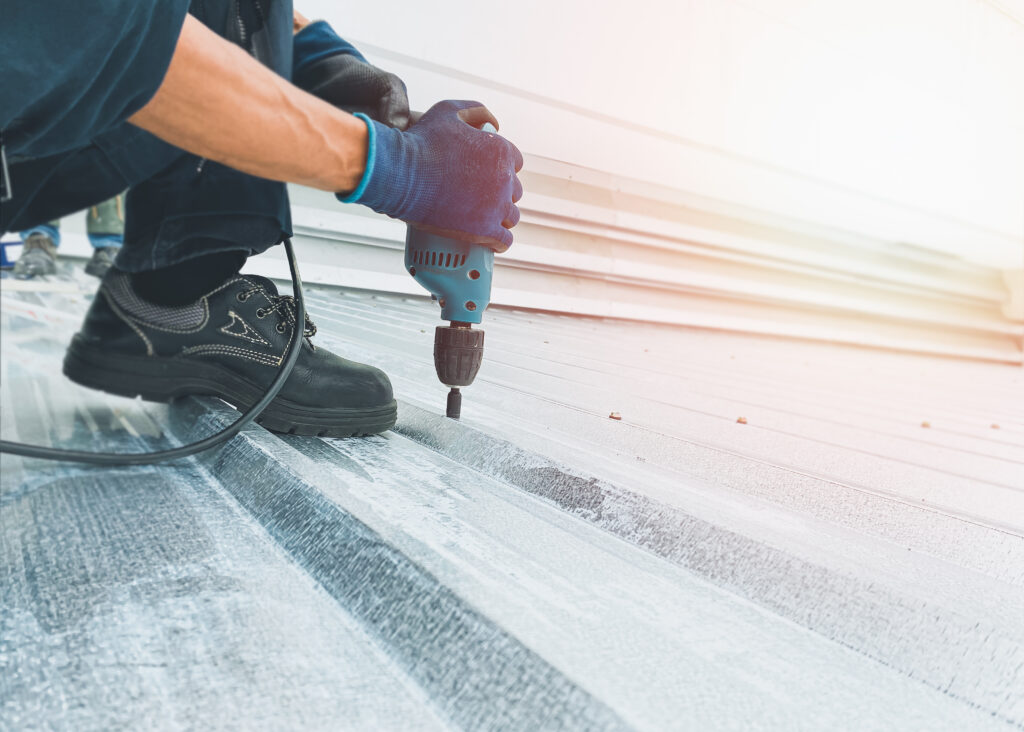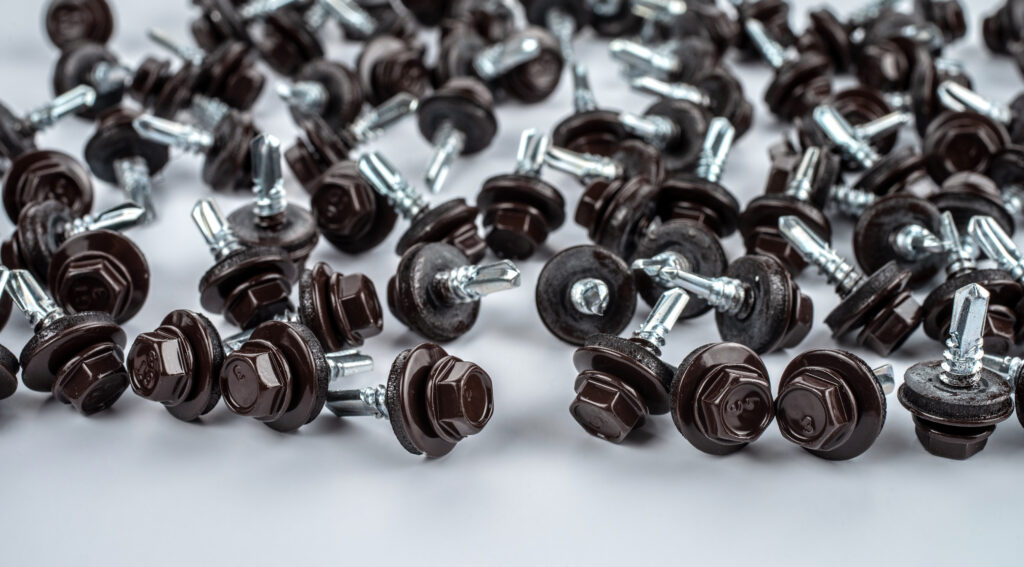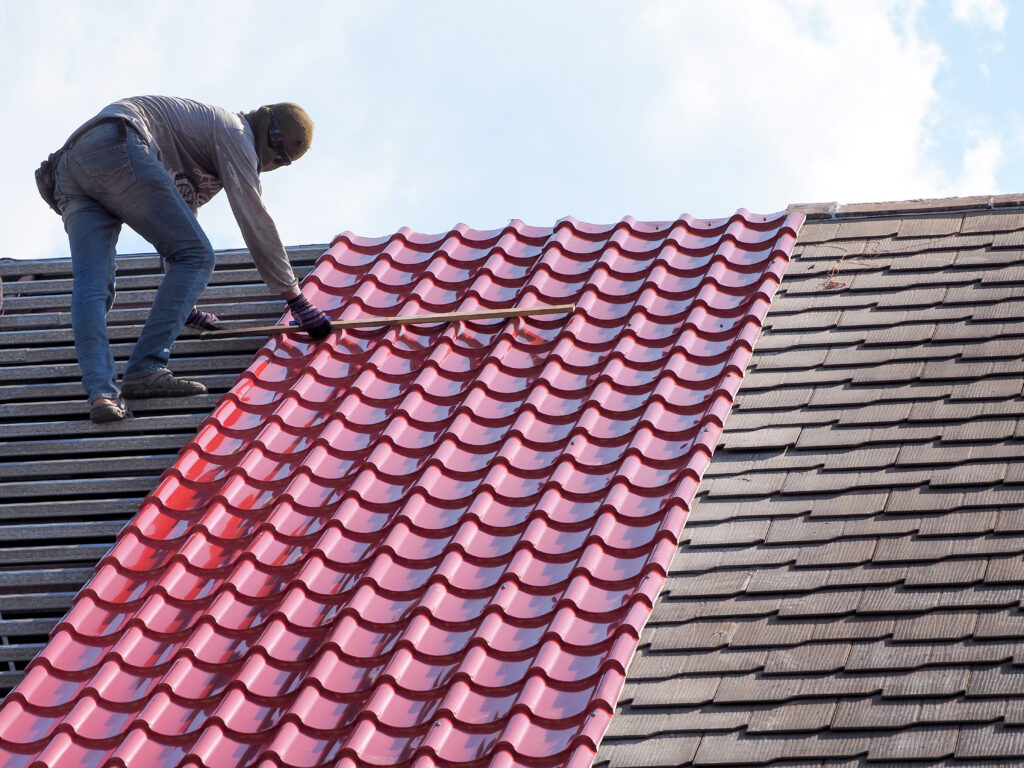Metal roofs are known for their strength, longevity, and performance, but like all good things, they need repair from time to time. If you own a property that has a standing seam metal roof system, you’ve surely witnessed its ups and downs.
Rust, storm damage, as well as the expansion and contraction of the metal can cause problems that must be repaired.
In the following article, we’ll address the most common issues that occur with this type of roofing system and give you the most optimal metal roof repair solutions.
What Are the Most Common Metal Roof Issues?
Metal roofs have weak spots, and if the installation isn’t done properly, you could end up with major problems. Most often, metal roof leaks are related to the “finishing touches” of the metal roof system. You probably won’t notice those glitches right away, but time will tell in the end.
Here are the most common metal roof problems:
- Openings in penetration flashing
- Openings in the horizontal seams
- Screws backing out
- Metal roof oxidation
- Open ridge flashing
We’ll go through each one in detail.
Openings in Penetration Flashing
As said above, metal roofs expand and contract due to temperature changes. But why should that bother you?
Well, that movement of the metal panels causes stress at certain attachment points, which then leads to a breakdown of the flashings at the penetrations, and voila, you have a leak.
Keep in mind that during the installation of a metal roof system, multiple panels are attached together at the seams. In other words, once you’ve set everything up, it’s hard to disassemble it to allow the repair of the penetration flashing.
Openings in the Horizontal Seams
Metal roof isn’t a one-part assembly, meaning there are gaps and areas where multiple pieces (metal panels) overlap. During the installation, it’s crucial to seal those gaps properly because, otherwise, leakage is inevitable.
Therefore, each metal roof will have horizontal seams installed into the system. However, those seams can, over time, start to separate, allowing water to enter and cause damage.
In this case, the most common cause of leakage is a condition called capillary action (the movement of water through narrow spaces due to cohesion, tension, and adhesion forces). Add wind, heat, snow accumulation, and the weight of the water, and at some point, the seals will start to deteriorate.
Screws Backing Out

Probably the most common cause of metal roof leaks is roofing screws. Fasteners, nails, or screws usually have a neoprene washer used to seal the fastener head to the metal roof panel, keeping the water out.
However, screws can start to back out due to vibrations of the metal panel caused by wind, and during winter time, there’s a high chance of them failing due to freeze-thaw.
Problems also happen when the screws are:
- Under-driven; not sealed tightly enough
- Over-driven; sealed too tightly
- Skewed; driven at the wrong angle
Metal Roof Oxidation
Most metals are subject to oxidation, and considering that metal roofs include materials such as steel, copper, aluminum, and zinc, oxidation is surely a factor you should take into consideration when installing/repairing a metal roof.
Because water contains oxygen, it’ll oxidize the roof and cause rusting. For your roofs to prevent rusting, most metal roof panels have been coated with a protective surface. But, since time rarely plays in your favor, the coating can wear away.
You can have serious problems if surface oxidation occurs, and you’ll need specially formulated chemicals to restore rusted metal surfaces to near-new conditions.
Open Ridge Flashing
When installing a metal roof system, it’s important to match it with other surfaces of the building. You’ll mostly have rising wall details that “blend” into other parts of the construction.
And those “blending” spots are the weakest ones, mostly because of bad installation. In other words, installing closure strips that prevent water from blowing into the construction (which some contractors leave out) is important.
Age, weather, membrane shrinkage, and moisture penetration can also affect and damage your metal roof system.
Metal Roof Repair Solutions
Once you’ve done with the roof inspection, you can start thinking about how to repair the damage.
You’re mostly left with the option to either repair, restore, or replace the roof system with a new one.
Here, we’ll go through four repair options, which are:
- Replacing the screws and fasteners
- Installing a roof coating system over the existing one
- Installing spray foam over the existing metal roof
- Replacing the entire metal roof system
Replacing the Screws and Fasteners

Have your screws started to back out? As said above, screws can be badly installed (underdriven, overdriven, and driven at the wrong angle), and some can back out due to weather and old age. Your best option would be to remove all the suspicious screws and install new ones.
However, inspecting every single screw is quite time-consuming, and if you were to do that, be aware that it’s a labor-intensive repair. And if your screw has backed out by 0.01 inches, you probably won’t be able to spot it, and after a short period, you’ll have to replace yet another screw.
Installing a Roof Coating System Over the Existing One
Installing a roof coating system would be the most payable option out there. The price usually goes from $4 – $6 per sq. This type of repair will install an elastomeric coating over the existing metal panels by spraying or rolling the material.
However, before installing a roof coating, you first need to prepare the metal panels for them to be able to accept the coating. That implies the following:
- Replacing metal parts that could alter the coating’s adhesion
- Power washing
- Doing adhesion tests
- Using a rust inhibitor primer
- Adding additional coating over the fasteners, screws, and seams
Only the damaged parts will be removed during installation, meaning there’s minimal tear-off during this process.
Installing Spray Foam Over the Existing Metal Roof
With coating being the most payable option, installing a spray polyurethane foam would be the most durable option.
The installation can be done over the existing roof, having minimal tear-off. There are also quite a few benefits of installing a foam roofing system. The spray foam has an increased R-value and will pay for itself in 5-8 years in energy savings. It also has closed-cell properties, which means that if damage happens, water can’t expand horizontally and vertically because it’ll stay in the crack without moving.
But installing spray foam is a bit expensive, and since it can only be spray-applied, you need to check if your area allows spray foam application.
Replacing the Entire Metal Roof System

Repair or replace? The question is real! If your metal roof has significant damage or is over a decade old, it’s best that you replace it with a new one. It’s time-consuming, complex, and a bit expensive, but sometimes there are no other reasonable options.
If you’re unsure whether your metal roof can be fixed or not, here are a few indicators that your roof has done its job and should be retired. In other words, you need to get yourself a new metal roof.
- If you see extensive rust. Generally, rust is a sign that the protective coating and roofing system is aging
- If there’s widespread leaking, this problem is usually the result of others, such as loose panels, rust, poor installation, etc.
- If you have a large number of loose panels. Although a few loose panels can be fixed, multiple damaged panels indicate there’s an underlying issue that’ll eventually result in replacing the roof.
Contact Paramount Exteriors if You Have Any Doubts
If you have metal roof leaks and want to know what’s causing them, don’t hesitate to reach out to us. Whether you need a repair or even a partial or full replacement, know that we’ll carry out the work properly and with quality to the end. Your roofing needs will be fulfilled! Want a quick and free roof inspection? We got you covered. Give us a quick call, and we’ll be on our way!
